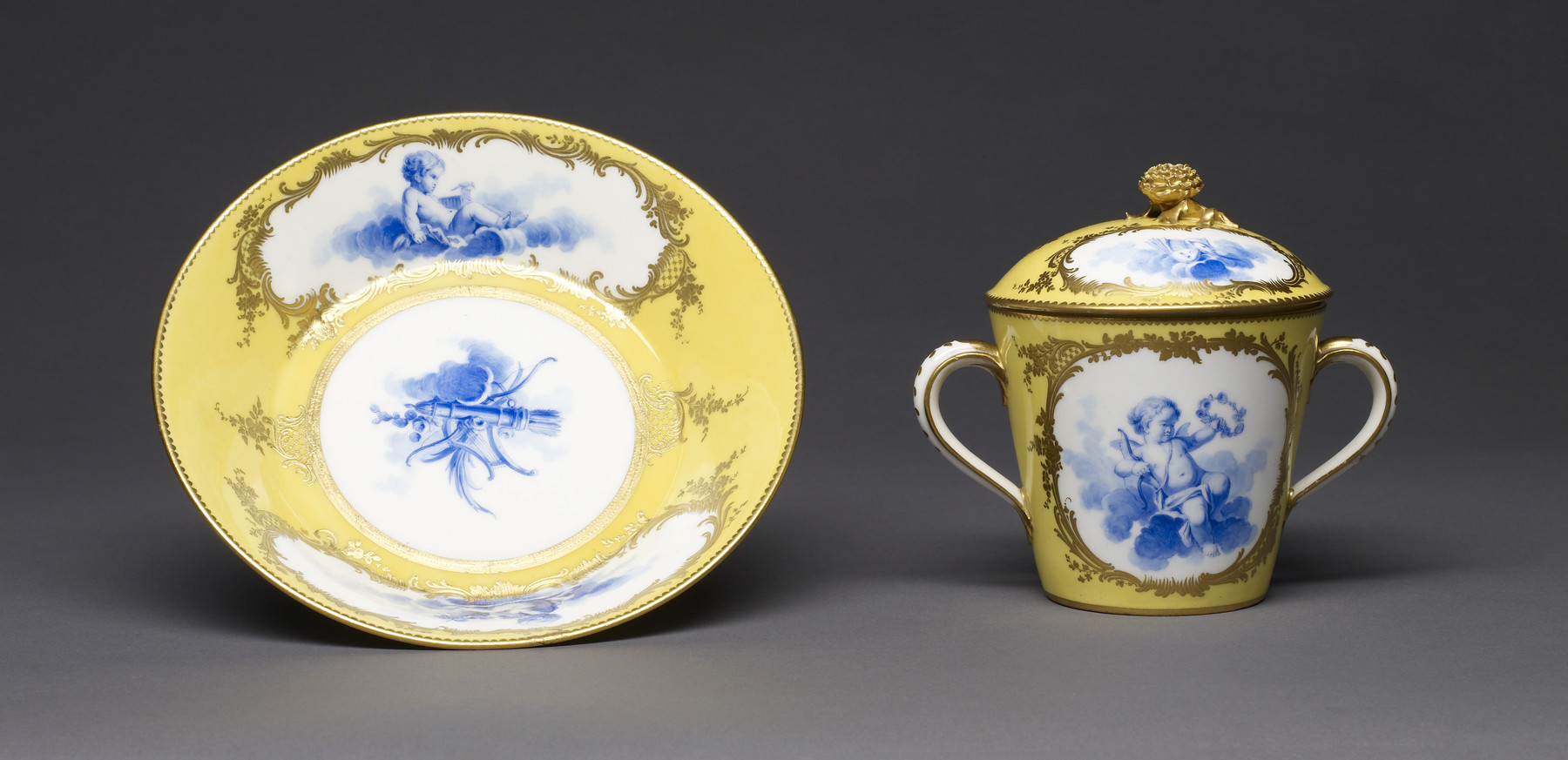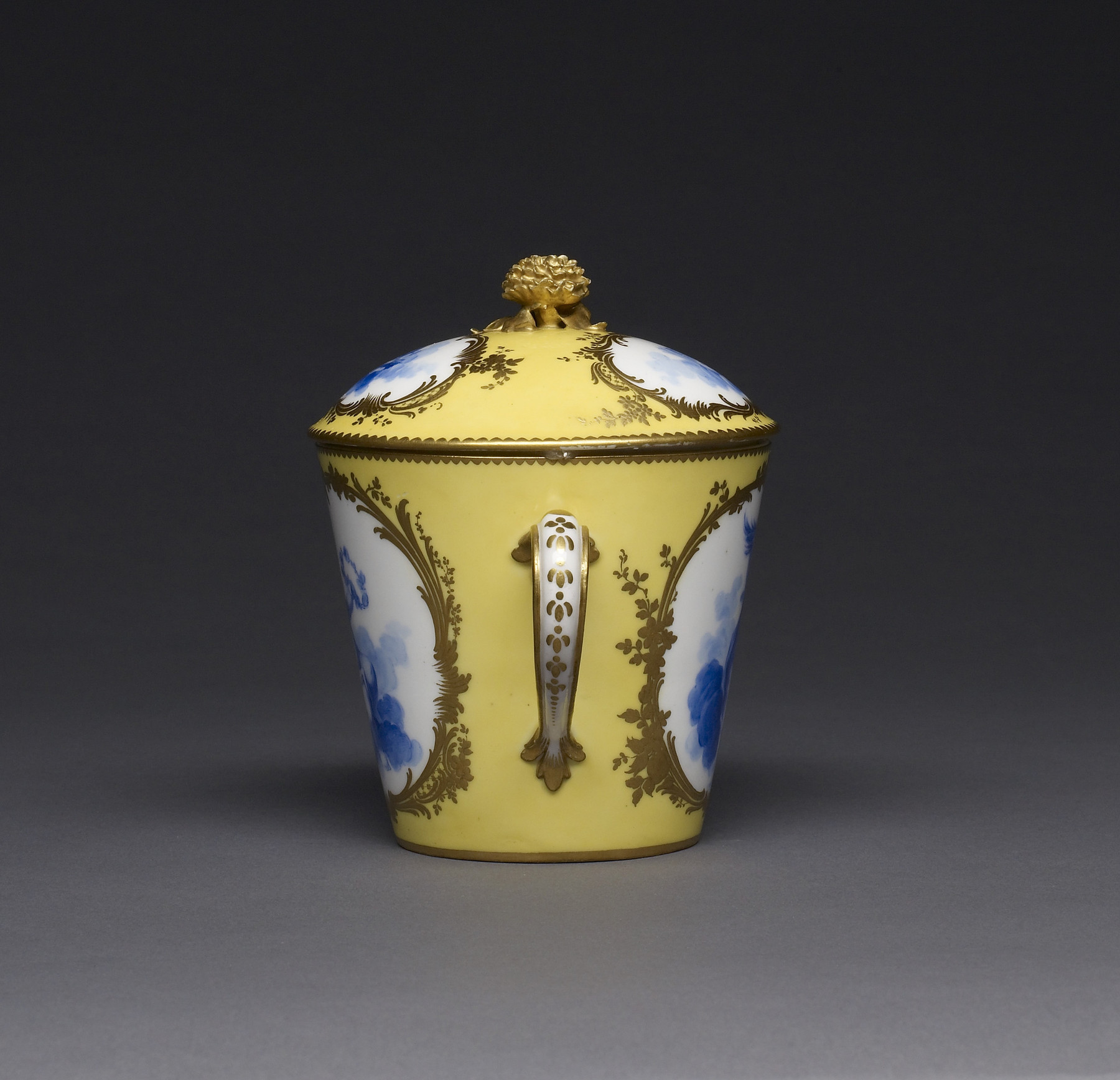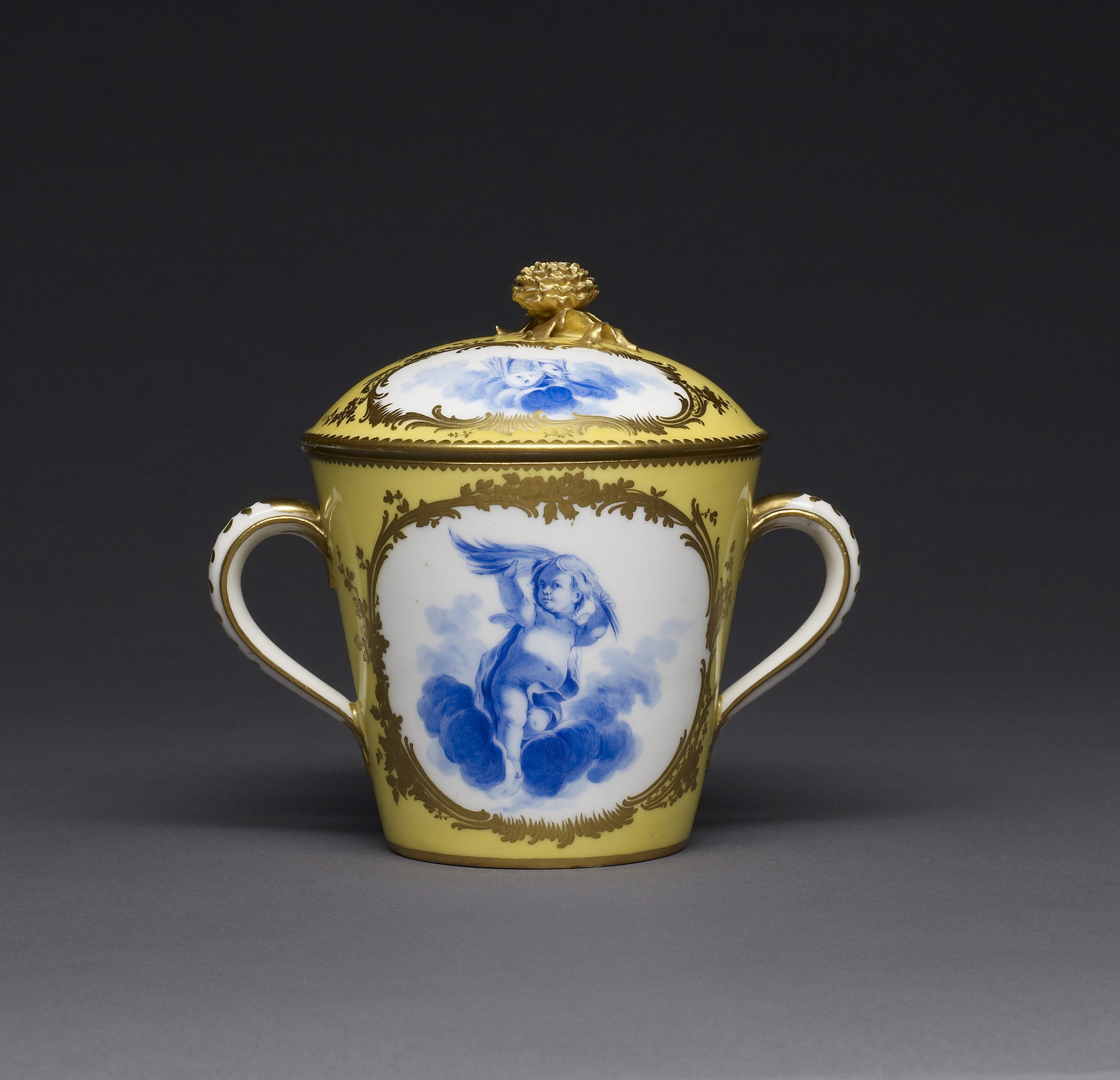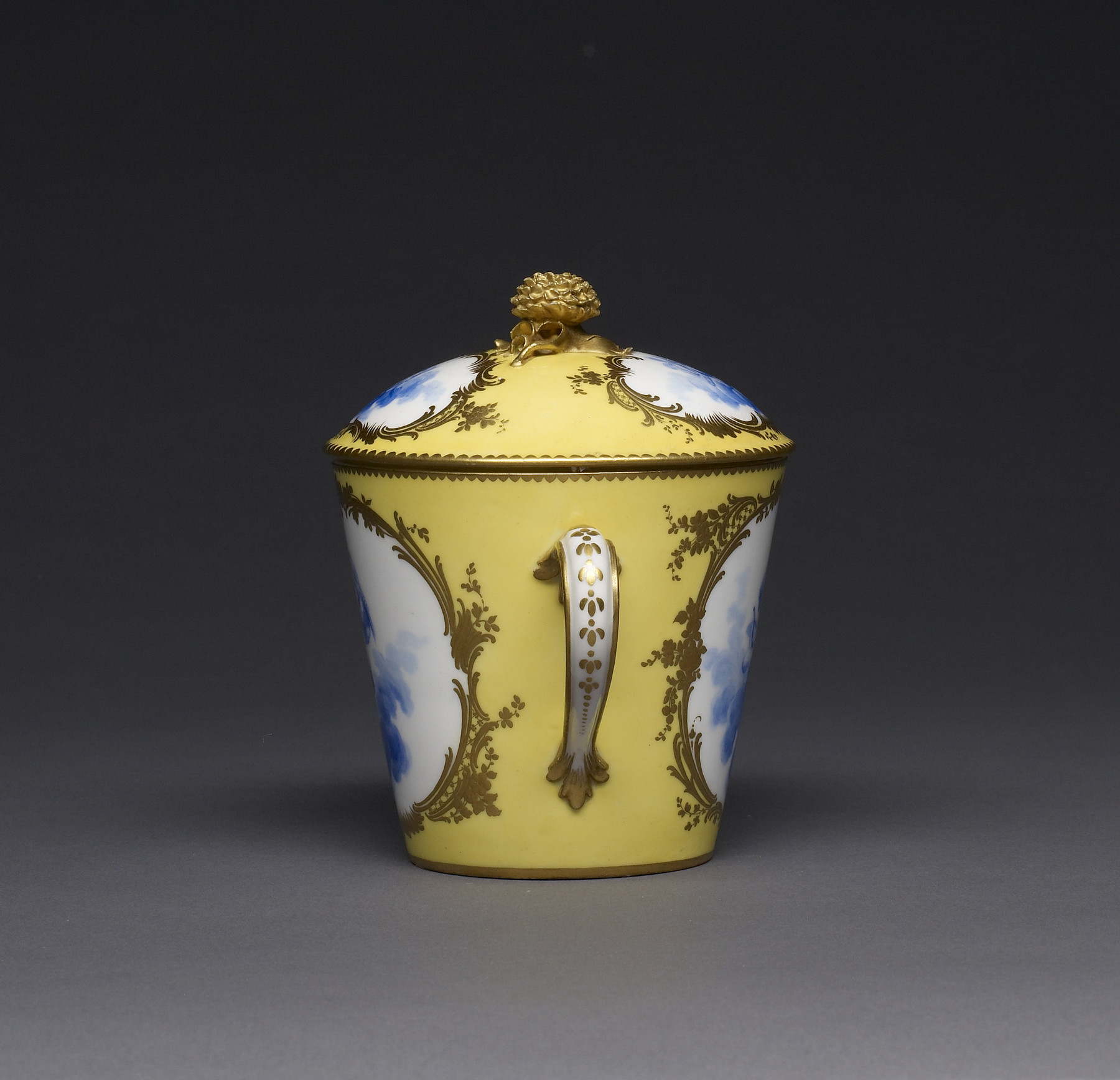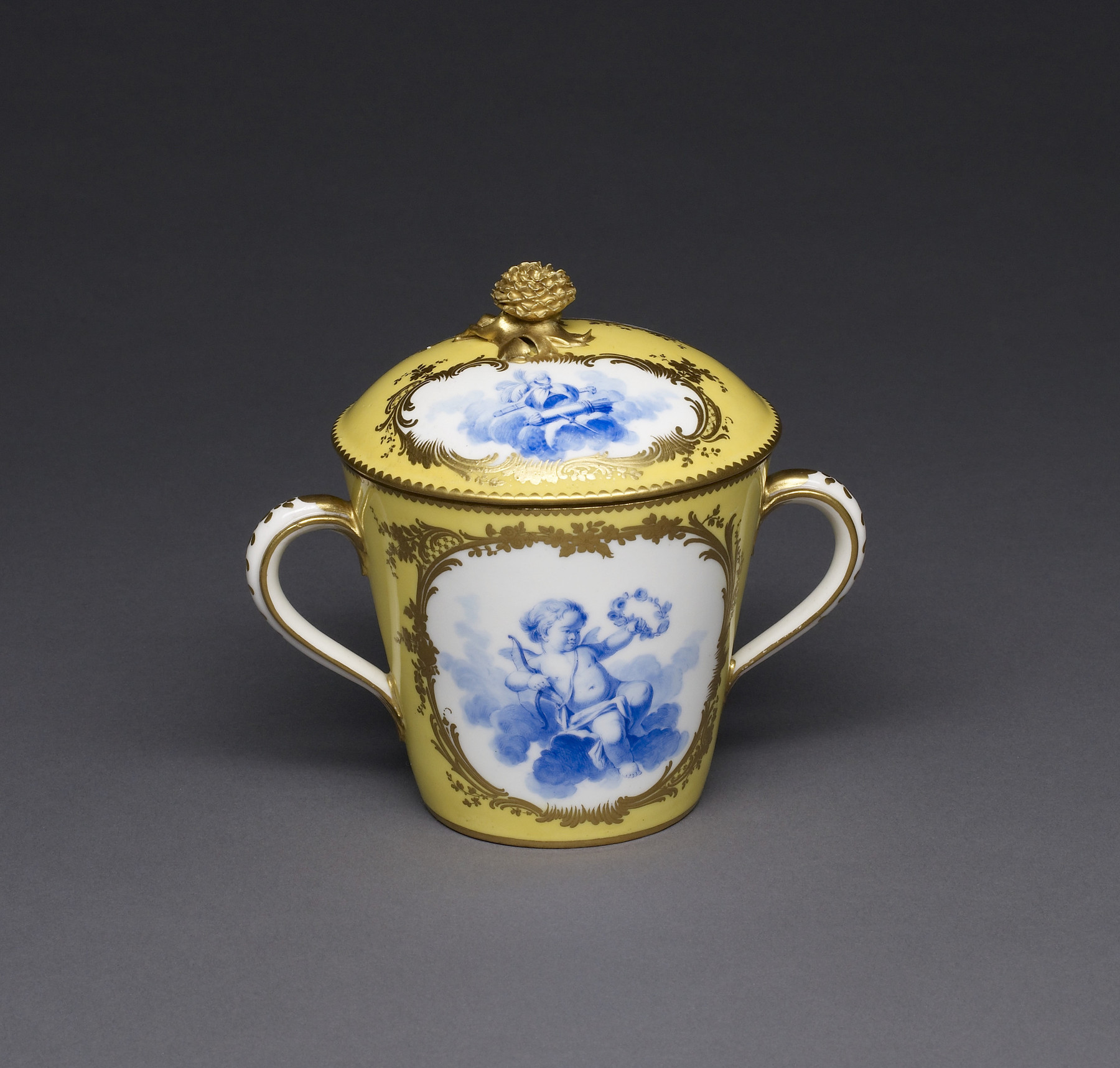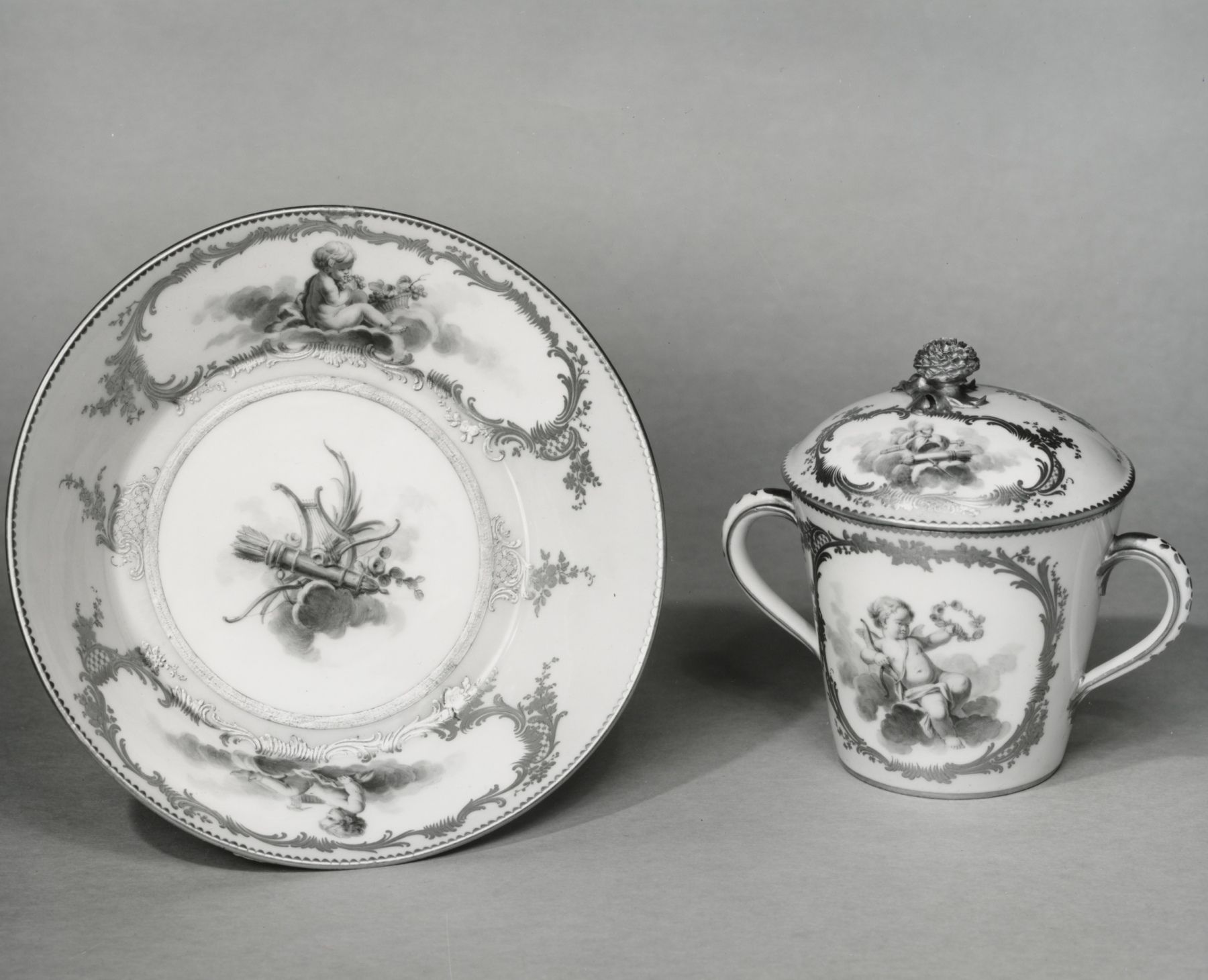Two-Handled Covered Cup and Saucer
(18th and 19th Centuries )
Yellow was among the rarest colors employed at Vincennes. The scenes of putti and trophies recall the designs of François Boucher. This smaller size cup and saucer was introduced in 1753 and manufactured until about 1780 as a variation on a shape introduced the previous year, which holds a pint of liquid. This style of cup was especially popular in the 1750s and was widely purchased by the royal family and aristocracy.
At the time this cup was made hot or cold milk was mixed with water, wine, beer, infusions of St. John's wort, violets or sugar of cress, and cereals (barley, rice and sago). Milk drinks were prescribed for those suffering from fever, depression, or hangovers.The deep saucer could be used as a bowl for cooling the drink, or as a tray for slices of bread. Examples in Madame de Pompadour's inventory were in a "garde-robe" adjoining a bedroom. (For more information see "The Wallace Collection Catalogue of Sèvres Porcelain," vol. II, pp. 667-674.)
Provenance
Provenance (from the French provenir, 'to come from/forth') is the chronology of the ownership, custody, or location of a historical object. Learn more about provenance at the Walters.
The Antique Porcelain Co. Inc., New York; Walters Art Museum, Baltimore, 1964, by purchase.
Exhibitions
| 1995-1996 | Going for Baroque. The Walters Art Gallery, Baltimore. |
Geographies
France, Vincennes (Place of Origin)
Measurements
Cup H: 3 1/2 × Diam. at Rim: 3 13/16 in. (8.89 × 9.68 cm); Cup with lid H: 5 in. (12.7 cm); Saucer Diam: 7 1/4 in. (18.42 cm).
Credit Line
Museum purchase with the help of a gift from the Louis and Henrietta Blaustein Foundation, 1964
Location in Museum
Not on view
Accession Number
In libraries, galleries, museums, and archives, an accession number is a unique identifier assigned to each object in the collection.
In libraries, galleries, museums, and archives, an accession number is a unique identifier assigned to each object in the collection.
48.2272


